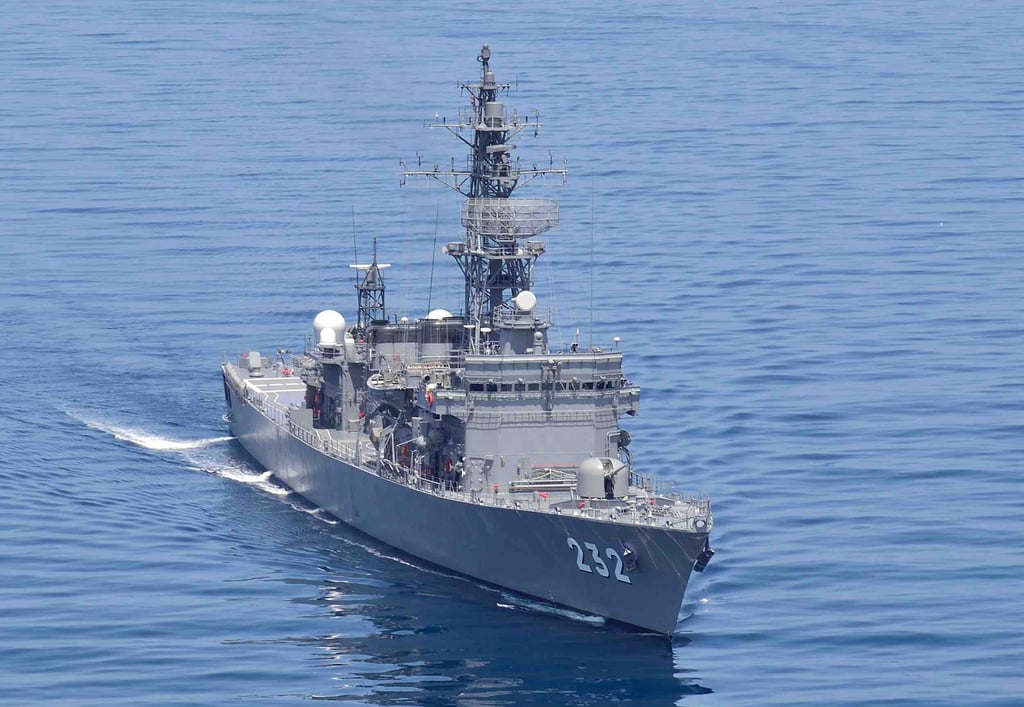Japan plans to transfer six decommissioned Abukuma-class destroyer escorts to the Philippines
NEWS
Japan times
7/10/20254 min read


Japan is looking to transfer secondhand Maritime Self-Defense Force Abukuma-class destroyer escorts to the Philippines, in what would mark Tokyo’s first export of an entire major naval platform in decades.
Such a move would come as Japan aims to boost the defense capabilities of like-minded neighbors as a counter to growing Chinese military assertiveness.
The Philippine Navy confirmed earlier media reports, saying in a statement Sunday that navy officials are preparing to conduct a “joint visual inspection” of the 109 meter-long vessels, reportedly slated for later this summer, following an invitation by Japan’s Defense Ministry.
Philippine Navy spokesperson Capt. John Percie Alcos said the move would be part of “exploratory discussions” on the possible transfer of these ships, which some refer to as guided-missile frigates.
A delegation of Philippine navy experts will then be dispatched to conduct an in-depth assessment of the ships, with the outcome expected to guide further deliberations on the potential acquisition as part of the service’s modernization program.
The statement went on to say that the Abukuma-class vessels, which are mainly designed for anti-submarine and anti-ship warfare and are known for their “reliability and versatility,” align with the Philippine Navy’s operational requirements.
The MSDF currently operates six Abukuma-class ships, all of which entered service between 1989 and 1993. They have a crew of 120, a full-load displacement of about 2,500 tons, a top speed of 27 knots (50 kilometers per hour) and are armed with torpedoes, anti-surface missiles, a naval gun and a close-in weapons system.
No details were revealed about the number of platforms Manila is considering acquiring, the potential delivery schedule or whether this would be part of a grant or government-to-government purchase.
The Yomiuri Shimbun reported that Japan may look to turn the export into a “joint development” project by overhauling the more than 30-year-old ships and updating them with modern systems sought by the Philippines.
This would not only make sense for Manila but would make it easier for Tokyo to transfer the platforms under its current arms export rules.
According to Japan’s revised Three Principles on Transfer of Defense Equipment and Technology, it can only export defense equipment under strict conditions, such as when the gear is intended for rescues, transportation, vigilance, surveillance or minesweeping.
Weapons platforms that are regarded as part of “international joint development and production projects,” however, are exempted from these rules.
The principles were first implemented in 1967, revised in 2014 and loosened again last year to ease the export of equipment, as Tokyo aims to help shore up the country’s military industry, one of the key pillars of Tokyo’s 2022 Defense Buildup Program.
In the postwar era until 1967, Japan is known to have exported several warships, including tank landing ships to Indonesia.
The Abukuma transfer talks come as Tokyo steps up efforts to bolster the defense capabilities of like-minded neighbors, particularly Manila. The Philippines is seeking to close a significant capability gap with the Chinese Navy as the two sides remain embroiled in an intensifying territorial and maritime dispute in the South China Sea.
Not only is the Philippines the only country set to become a recipient of Japan’s military aid program for the fourth straight year, but it has also bought air surveillance radars from Tokyo and received over a dozen coast guard vessels.
Manila is also no stranger to receiving secondhand military equipment from Japan following the provision of five TC-90 aircraft between 2017 and 2018 for use in maritime patrols, with reports now stating that the Philippine Navy is interested in acquiring even more.
As the first Abukuma vessels are slated to be retired from 2027 — with the MSDF’s newer Mogami-class frigates replacing them — their potential transfer to the Philippines would prove beneficial for both sides, experts say.
“This represents a momentous win-win opportunity for Japan's security relationship with the Philippines,” said John Bradford, founder and executive director of the Yokosuka Council on Asia-Pacific Studies.
On the one hand, he said, these ships would be able to provide a relatively fast and low-cost solution to the Philippines’ pressing need for naval capabilities. On the other hand, the transfer would set a precedent for Japan's more open policy toward arms exports as this would be “a complete platform package that can defend itself, identify targets and fire with lethality.”
“Unlike a radar set, no one will mistake these warships for anything other than weapon systems being provided to the Philippines so that it can defend itself from naval aggression,” he added. “They are made to deter and, if necessary, fight in wars.”
Another advantage would be increased interoperability.
“MSDF destroyers were designed from keel up for interoperability with the rest of the Japanese and the U.S. Navy fleets,” Bradford said, something the Philippine Navy could also use to its advantage.
A transfer would give the Japanese defense industry more experience in arms codevelopment, exports and international customer service, especially should Japanese companies be tasked with upgrading and maintaining the vessels.
Exporting secondhand vessels would also help Japan establish a track record, said Masashi Murano, a military expert at the Hudson Institute think tank, while proving a boon for companies.
“It is unlikely that there will be sufficient extra MSDF personnel to provide operational support or training to the Philippine Navy, so to address this issue, options such as relying on the industry side or effectively utilizing retired MSDF personnel may be considered,” Murano said.
This would provide valuable experience going forward as Tokyo also aims to export new vessels, including an upgraded version of its Mogami-class frigate to Australia that would be customized to fit local requirements.
The multimission Mogami-class is currently competing with Germany’s Meko A-200 for a contract to replace the Royal Australian Navy’s Anzac-class frigates. A decision is expected to be announced later this year.
Meanwhile, Indonesia, which has also expressed interest in the Mogami, is known to also be looking into the possibility of acquiring decommissioned Soryu-class submarines from Japan.
